India’s Independent Years 1947 – 2013 : Journey of 66 years in 66 Pictures
India‘s Independent Years 1947 – 2013 : Journey of 66 years in 66 Pictures
- 2013 : 66 years since independence, and the journey continue for India which needs to rise up to new challenges in the coming years, it is extremely important to remember Swami Vivekananda and his message to the youth “I have faith in my country, and especially in the youth of my country. My hope is in you”
- 2012 : The gloom of slowing down economic growth, large scale corruption scandals and complete lack of governance was made worst by a barbaric incidence in the heart of capital city New Delhi, even hardest of heart would shatter to piece looking at the gruesome crime committed against a young girl. No longer we can live with impotent shame, it is time to feel the anger and ensure that those who are guilty must be punished severely.
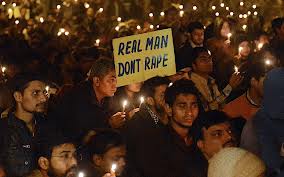
2012 Mass protest starts across India after a female student gang raped and brutally tortured in Delhi
- 2011 : It was the year when Anna Hazare proved that Indian youth willing to go an extra mile, if an honest attempt is made to guide them on the right path. Alas, the anti-corruption ‘Lokpal’ movement was hijacked by few people for their own petty political gains. A win at Cricket world cup, after 28 years, by Dhoni Eleven brought some solace to an otherwise painful year.
- 2010 : The Indian growth story had still not lost its sheet till 2010; the future was looking bright for an energy starved country, with the signing of Nuclear reactor deal with Russia,
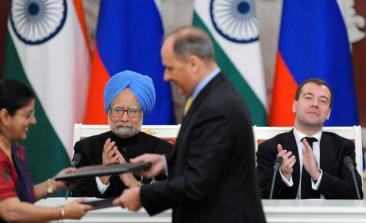
2010 India – Russia signs a nuclear reactor deal which will see Russia build 16 nuclear reactors in India.
- 2009 :The mission to moon had raised so much expectation. Even though not total success, it was a huge achievement for India - Chandrayaan operated for 312 days as opposed to the intended two years but the mission achieved 95% of its planned objectives
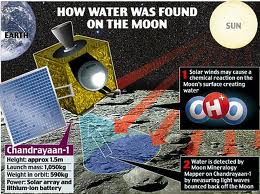
2009 Chandrayaan-1, India’s first unmanned lunar probe, discovers large amounts of water on the Moon
- 2008 : Finally the drought of Gold at Olympic ended, as Abhinav Bindra won first Individual gold medal (in shooting) for India at Beijing Olympics but the year will also be remembered for India’s own version of 9/11 tragedy; the 26/11 terror attacks in Mumbai where Pakistani terrorist killed innocent people on the roads, inside the Hotels, at railway station, even inside place of worship would leave a scar on the nation’s psyche forever. Our daughter Meera was a new-born baby when the attack happened, my wife Abha witnessed the terrorist drama live on television through out the night.
- 2007 : Even though it was painful to see India’s best president till date, Dr. APJ Abdul Kalam leave the Rashtrapati Bhavan – there was some hope that a woman President would continue to uphold the high standard set by him – alas Mrs. Pratibha Patil would only be remembered as first woman president of India and some other petty controversies.
- 2006 : 7/11 for India – 7 bomb blasts by Islamic terrorists over a period of 11 minutes on the Suburban Railway in Mumbai, Financial capital of India, killed 209 innocent people more than 700 were injured. Our son, Kabir was born this year, followed within a few month by the passing away of my mother.
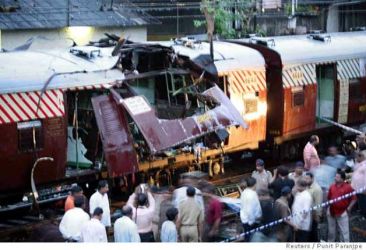
2006
Mumbai train bombings – Series of coordinated bomb attacks strikes
several commuter trains in Mumbai, India during evening rush hour
- 2005 : This time it was a natural disaster that struck Mumbai on 26 July’05 at 2:00pm starting with a heavy storm, a record 944 mm of rain occurred in the next 24 hours. It was a nightmare for the people in Mumbai, approximately 5000 people lost their life.
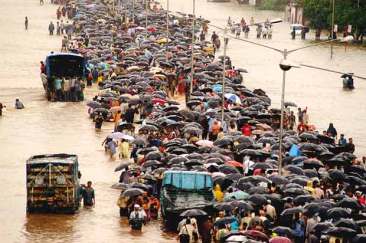
2005 Mumbai submerged in water due to heavy rains, which virtually stops the financial capital of India for 4–5 days
- 2004 : The Tsuname’s maximum impact was in Indonesia, but it also affected the coastal areas of India and Srilanka.
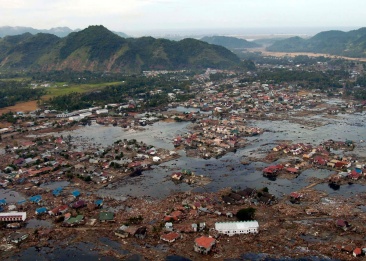
2004 Tsunami off the west coast of Sumatra island, Indonesia sweep across much of the coastlines of South Asia
- 2003 : Those were the
days when India was truly shining, India was the top of mind world over,
the economy was booming, there was positivist all around. Abha and me
got married this year
 and India cricket team was very close to winning the world cup of cricket, lost to Australia in the finals.
and India cricket team was very close to winning the world cup of cricket, lost to Australia in the finals.
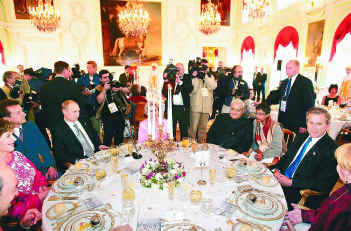
2003
India Shining Prime Minister Vajpayee has the rare honour of joining
the head table at the 300th foundation day of St. Petersburg with
Vladimir Putin and George W. Bush.
- 2002 : It was the a human tragedy occurred in Gujarat that some people in India refuse to stop taking advantage off. The riot across Gujarat where innocent Muslims were killed followed burning of innocent Hindus in a train bogey, were the last religious riots that Gujarat saw, forever.
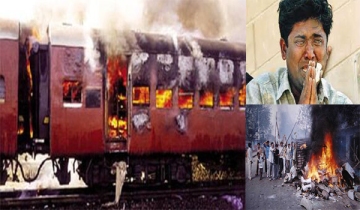
2002 Series of riots leaves hundreds dead, after 59 Hindu pilgrims die aboard a train burned by a Muslim mob in Godhra, Gujarat
- 2001 : Kumbha Mela at Allahabad, India in 2001 saw the largest gathering of Human beings ever on the planet earth. Kumbha Mela comes after every 12 years and Hindus from across India and the world over come to take a dip in the holy waters at the sangam of three rivers Ganga, Yamuna and Saraswati.
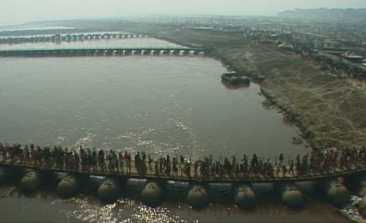
2001
More than 100 million people – almost 2% of the world’s population –
attend the Maha Kumbh Mela festival in Allahabad, India
- 2000 : It was the turn of a century, something a person can witness only once in a lifetime, and we were fortunate to live through those exciting times. I was at the banks Ganga, India’s greatest river when the eagerly awaited Y2K arrived.
- 1999 : There was hope in the air this year, which soon turned into a pain when our friendly neighbors in Pakistan stabbed the Prime Minister Vajpayee for his historic goodwill bus journey to Lahore with a Kargil war, which saw 100s of young Indian & Pakistani soldiers die for nothing.
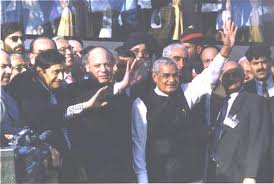
1999 Indian Prime Minister Vajpayee makes a goodwill visit to Pakistan on the maiden trip of a cross-border bus service.
- 1998 : The timing of India’s underground Nuclear test may have been a huge shock the world, but it certainly wasn’t a surprise. It was an open secret that India is a Nuclear power, and there was tremendous pressure on the country to sign the Non-Proliferation Treaty which would have made is impossible for India to carry out such tests in the future. Again Prime Minister Atal Bihari Vajpayee took a bold decision which was in the interest of India in terms of long term defense strategy. We do not want to lose our freedom ever again.
- 1997 : The world mourned passing away of Mother Teresa, a living legend who work tirelessly for the poor, children and sick people. She made city of joy – Calcutta (now known as Kolkata) her home and worked tirelessly till her very end.
- 1996 : It was a disaster of strangest kind, two planes collided mid-air with each other head-on over the State of Haryana in India. The investigation later on revealed communication gap as the key reasons why the Kazakhstan plane’s pilot did not heed to the advice from the control tower. Another disgraceful incidence of the year was shameful behavior of Indian cricket fans at Eden Garden stadium of Culcutta where Indian Team lost World Cup Semifinal match against Sri Lanka who went on to win the world cup that year.
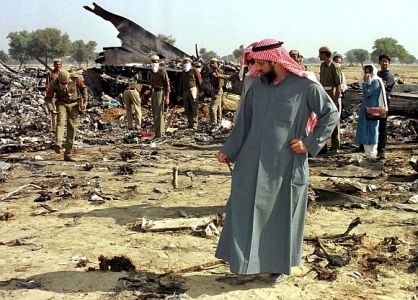
1996
A Saudi Arabian Boeing 747 jumbo jet and a Kazakhstan Ilyushin cargo
plane collide near Charkhi Dadri, killing 349 people in the world’s
deadliest mid-air collision.
- 1995 : I was in my office in New Delhi when I heard the rumors that the idols of Hindu God Ganesha across the country have started drinking the milk offered to them by the devotees. Very soon all the God’s were drinking the milk and there were huge queues outside all the temples, milk vanished from the market place. Many scientific explanations were provided later on and it was dubbed as a big hoax, but it had no impact on the devotees who continue to believe that the God’s did accepted milk on that day.
- 1994 : It was considered a conspiracy that Aishwarya Rai didn’t win the Miss India Title of the year, the winner Sushmita Sen was considered well connected to some of the jury members. None-the-less, Both Aishwarya and Sushmita made India proud by winning Ms. World and Ms. Universe beauty contests in 1994. Aishwarya Rai continue have a huge set of admirers across the globe, she has acted in Hollywood movies and is a star guest at global movie events.
- 1993 : The day is known as Black Friday in India – 12th March 1993 when Bombay was rocked hard by her own sons and the things are never the same again. A series of 13 bomb explosions, coordinated by Dawood Ibrahim, the terrorist hiding in Pakistan since then, were the most destructive bomb explosions in Indian history. The single-day attacks resulted in over 250 fatalities and 700 injuries. This was also the year when I graduated from college.
- 1992 : It was an incident destined to happen after years and years of requests by Hindu across India to allow them to re-build a temple on the site which is considered as birth place of Lord Sri Ram. There used to be an ancient temple on the site which was converted into a mosque by the Muslim invaders in 16th Century, but the place continued to have statues of Hindu God and Goddess inside its premise and was not in use as a mosque for more than half a century. On December 6, 1992, a large crowd of Hindu volunteers destroyed the structure known as Babri mosque in Ayodhya – the birth place of Hindu God Sri Ram, in an attempt to reclaim the land known as Ram Janmabhoomi. The demolition occurred after a religious ceremony turned violent and resulted in several months of communal rioting between India’s Hindu and Muslim communities, causing the death of at least 2,000 people, Hindu temples across South East Asia were destroyed by Muslim as a retaliation, in the areas wherever they were in majority.
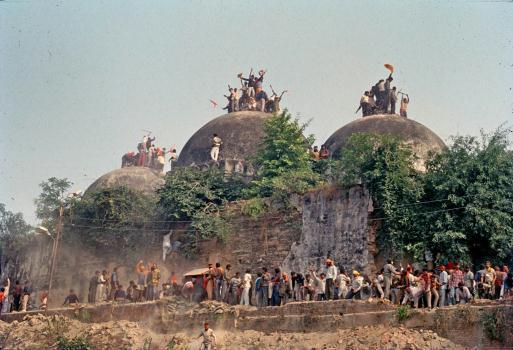
1992
Demolition of Babri Mosque by Hindu mob. A temple on the site of Lord
Ram’s birth place was converted into mosque by Muslim invaders
- 1991 : Our karma comes back to hit us in the ways we do not even imagine. Rajiv Gandhi entered into a agreement with Sri Lanka which angered both Sri Lankan Sinhali population as well as the LTTE (Liberation Tigers of Tamil Elam) – a terrorist organization fighting against the Sri Lankan government and army for a separate homeland for Sri Lankan Tamils. Suicide bombers from LTTE managed to breach the security of Rajiv Gandhi during his election campaign in Tamilnadu and he died a violent death – a fate similar to the one suffered by his mother and younger brother earlier.
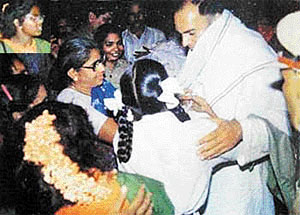
1991
Assassination of Rajiv Gandhi – By a LTTE Suicide Bomber in
Sriperumbudur near Chennai in Tamil Nadu during the election campaign.
- 1990 : It was my first year in College when the whole country started burning all of a sudden, the Prime Minister V P Singh decided to fight his political adversaries by increasing the reservation for backward caste in Education and Government employment. The urban youth went beserk, I witnessed the whole anti-reservation protest first hand, our’s (Desh Bandhu College) was the main center of agitation in Delhi. The picture below is that of Rajiv Goswami, a student from our College who was the first one to self-immolate himself as a protest against Government policy. I was there with him till the evening before this incidence, he was saved then but was never able to live a normal life again. The reservation was implemented, it did changed the political face of India, the urban youth decided to give up on the government and political system and moved on.
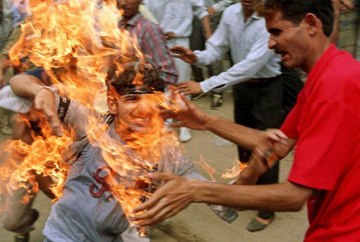
1990
Fierce agitation across India by youth against the reservation policy
of Mandal commission report implementation by PM V P Singh, who had to
resign soon afterwards
- 1989 : Some of my best memories of school time are from the last two years. It was also the time when my political (anti-congress) and ideological (Right) thought process took a firm shape – Economy was my favorite subject in those two years. Doing merit-demerit analysis of a mixed economy, it was clear to me that our country is being screwed real badly by those championing the socialist political thinking. The news from across the world about the end of Socialist experience in many other country confirmed the fears that we too are taking a very wrong path here in India. The corruption of the Congress Government under Prime Minister Rajiv Gandhi appalled the 17 year of me and I decided never to support anyone who indulges in corruption. Those were still the socialist days in India – I used to put up cartoons ridiculing the Prime Minister Rajiv Gandhi and in support of opposition in school notice board causing a number of scandals. I was worried more about the result of election than my own senior school exams. Congress lost, V P Singh became the Prime Minister, I was elated for a brief moment.
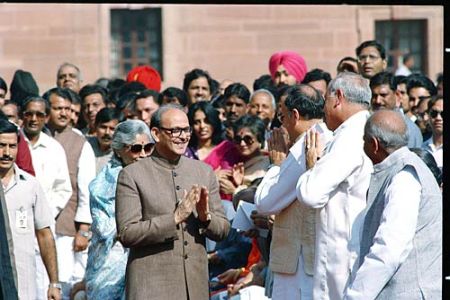
1989
V P Singh becomes the Prime Minister of India after massive corruption
scandal Bofors claims Rajiv Gandhi and his government
- 1988 : I was just an average student, playing cricket was my passion. This was the time when I played some of my best cricket in our local area. But it was also the time leave cricket, start studying, get good grades and focus on earning money as soon as getting out of school. The financial condition at our home was worst than the economic condition of India in those days. The assignment by our English teacher to read the Newspaper every day and make a report on the top news item, turned into an obsession of following the news from across the world, which continue even to this day. One of the initial news items that I recall from those days is the unsuccessful coup attempt in our neighboring country Maldives which Indian government helped to curb.
- 1987 : The high walls were starting to crumble, the Prime Minister who was considered as a Knight in shining armour was proving to be a huge embarrassment for India. It was in his sliding popularity days in India that PM Rajiv Gandhi decided to become a regional visionary by entering into a agreement with Sri Lankan government which resulted in humiliation for Indian army and his own untimely death.
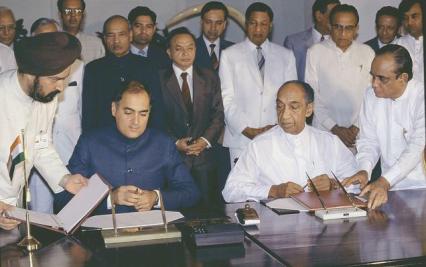
1987 Indo-Sri Lanka Accord – Had extremely negative impact; both the signatory lost their life to terrorism
- 1986 : One of those moment in India’s history after independence when the India society could have taken a huge leap towards empowerment and gender equality. The supreme Court of India ruled in favor of a divorced Muslim woman, but the super idiotic Congress government of day decided to go against it by making a law in the parliament which meant Muslim woman are denied their rights under the Indian constitution and they will have to go by the Muslim personal laws. It was a betrayal of woman by Congress party and leaders who were high on their political power in those days.
- 1985 : The Sikhs anger was continuously simmering with the politics of Congress Party over the years. The Air India Flight 182 was operating on the Montreal–London–Delhi route. On 23 June 1985, a Boeing 747-237B was blown up by a bomb at an altitude of 31,000 feet. It was the first bombing of a 747 jumbo jet. It crashed into the Atlantic Ocean while in Irish airspace. A total of 329 people were killed, including 268 Canadians – mostly of Indian descent, 27 British citizens and 24 Indians. The incident was the largest mass murder in Canadian history, and the deadliest aviation disaster to occur over a body of water. It is also the worst aviation disaster in Irish territory. The evidence lead to some Sikh terrorist, who unfortunately never got punished for their crimes because of the loop-holes in Canadian legal system. Personally for me this year was even more tragic, I lost my father in December this year, which also abruptly ended my childhood – I grew up by a decade within a month.
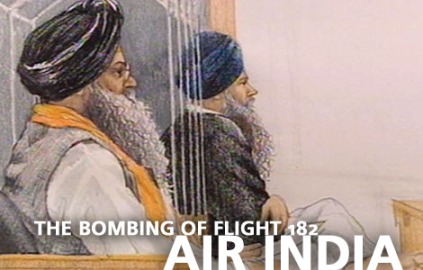
1985
Air India Flight 182, a Boeing 747, blows up 31,000 feet (9,500 m)
above the Atlantic Ocean, south of Ireland, killing all 329 aboard.
- 1984 : Terrible years for India and its citizens – the Bhopal Gas tragedy has people crying for justice even to this day. It is considered world’s worst industrial disaster. At the Union Carbide India Limited (pesticide plant) in Bhopal, over 500,000 people were exposed to methyl isocyanate gas and other chemicals on a winter night. The toxic substance made its way in and around the shanty towns located near the plant. Estimatesof death toll vary between 30000 to 8,000 died within two weeks and another 8,000 or more since then from gas-related diseases. The leak caused 558,125 injuries including 38,478 temporary partial injuries & approximately 3,900 severely and permanently disabling injuries.
- Delhi also witnessed its worst nightmare in 1984. Anti-Sikhs riots or the Sikh Massacre were a series of pogroms by anti-Sikh mobs mostly belonging to the ruling Congress Party, in response to the assassination of Indira Gandhi by her Sikh bodyguards. There were more than 8,000 deaths, across India including 3,000 in Delhi itself. All investigations since then have concluded that the acts of violence were organized with the support from the then Delhi police officials and the central government of Congress Party headed by Indira Gandhi’s son, Rajiv Gandhi. Rajiv Gandhi was sworn in as Prime Minister after his mother’s death and, when asked about the riots, later on he said “when a big tree falls, the earth shakes”. My father was fighting his throat cancer those days, but he witnessed and re-told us the horrors he saw on the roads of Delhi firsthand. Sikhs men and children were burned alive and women raped by the rioters. Fortunately there was no such incidence in the locality where we lived, my best childhood friend was a Sikh and we was camouflaged as a girl by his parent by tying his long hair into braids and wearing his sister’s clothes.
- 1983 : It was the most memorable day of my life till than, I was cray about cricket as a kid and India won the world cup of Cricket after beating the defending champion and almost un-beatable team from West Indies (the Caribbean islands) – Kapil Dev the captain of Indian team was my favorite cricket before the tournament started and he continues to be my all time favorite cricketer even to this day. We didn’t had television at our place in those days, I heard it on the radio.
- 1982 : The games meant an upgrade in Delhi’s infrastructure. 74 Asian records were broken during the games – a total of 3,411 athletes from 33 countries participated in these games, competing in 196 events in 21 sports and 23 disciplines – The number of participating countries was the greatest in Asian Games history. Handball, equestrian, rowing and golf were included for the first time. The Asian Games in Delhi were my initiation period into sports other than cricket. It was the first time I got the opportunity to watch a football match between two international teams live in a stadium and I was amazed.
- 1981 : Infosys was established in 1981, nobody knew anything about it or the rise it will have in the future in those days. Today it is a NYSE listed global consulting and IT services company with more than 155,000 employees. From a capital of US$ 250 then, today it has become a US$ 7.398 billion (FY14 revenues) company with a market capitalization of approximately US$ 31 billion. The incidence which was the newsmaker of the year in those days was a plane hijacking incidence which nobody remembers now. And yes I slept during a Bollywood movie Silsila, we went out to watch as a family outing, today it is considered as a classic – Silsila, I guess I was too young to understand it then.
- 1980 : People say that he was the real Prime Minister of India during the emergency days. Sanjay Gandhi died instantly from head wounds in an air crash on 23 June 1980 near Safdarjung Airport in New Delhi. He was flying a new aircraft of the Delhi Flying club, and, while performing a loop over his office, lost control and crashed. I was living in Minto road area during those days which was close to the Turkman Gate where a lot of Muslim were evacuated and their homes destroyed by the goons of Sanjay Gandhi – they celebrated it by distributing sweets in our area. It was also rumored that Prime Minister Indira Gandhi ordered no one to touch the body or the derbies of the plane when she heard the news. She arrived at the site of accident, removed Sanjay Gandhi’s wristwatch and took it in her possession.
- 1979 : Ignorance breeds fear – Panic struck parts of India when the news spread that a Space Ship is going to enter earth atmosphere and will come crashing down on earth. Some people named their kids Skylab after the incidence.
- 1978 : Air India Flight 855, a passenger flight, crashed on 1 January 1978 about 3 km off the coast of Bandra, Bombay. All 213 lives on board were lost. The crash is believed to have been caused by the captain having become spatially disoriented after the failure of one of the flight instruments in the cockpit. Also this was the year when Coca-Cola decided to shut its business in India when it was asked by the Indian Government to reduce its ownership stake in the Indian business.
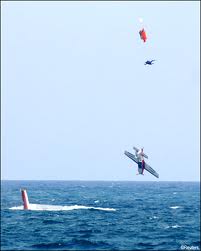
1978
Air India Flight 855, a Boeing 747 passenger jet, crashes into the
Arabian Sea after takeoff near Bombay, killing all 213 on board
- 1977 : Murarji Desai became the first non Congress Prime Minister to unfurl the national flag at Red Fort, finally giving India some break from the hold of Nehru Dynasty – mistakenly known as Gandhi Dynasty even though they do not have any linkage or right to call themselves Gandhi. The experimental government didn’t last long because the government had too many big opposition leaders which huge ego’s and ambitions. Murarji Desai holds international fame for the peace activism between Pakistan and India initiated by him and his Foreign Minister Atal Bihari Vajpayee. Murarji Desai has the credible distinction of being the only Indian national to be conferred with Pakistan’s highest civilian award, Nishan-e-Pakistan. But in India is remembered more as a longtime practitioner of Urine Therapy. In 1978 he spoke to Dan Rather on 60 Minutes about the benefits of drinking urine. Desai stated that drinking urine was the perfect medical solution for the millions of Indians who cannot afford medical treatment. He has been mocked by many for this eccentric habit since then.
- 1976 : During the emergency days, many believe that it was Sanjay Gandhi, the son of PM Indira Gandhi who was calling all the shots. Sanjay, a school dropout, who did apprenticeship at Rolls Royace in UK for a while, was especially concerned with issues of overpopulation. He, along with the group of his croonies, initiated a birth control program, chiefly employing sterilization, primarily vasectomies. Quotas were set up that enthusiastic supporters worked hard to achieve. Critics arouse anger by charging it involved coercion of unwilling Indians. During ’76-77, the program counted 8.3 million sterilizations, up from 2.7 million the previous year. The bad name forced changes in the name of the program and every government since 1977 has stressed family planning is entirely voluntary
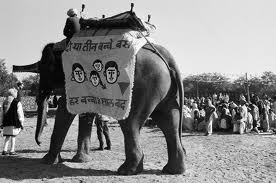
1976
Family planning initiative started with vasectomy of thousands of men
and tubal ligation of women, either for payment or under coercive
conditions.
- 1975 : For those who suffered hardship during emergency which were similar to the one faced by the Freedom fighters during British colonial rule, emergency days are considered to be the darkest day of Independent India’s History. Emergency was in effect from 26 June 1975 till 21 March 1977 for a 21 month period when Prime Minister Indira Gandh ruled the country with an iron fist under Article 352 of the Constitution of India, effectively bestowing on her the power to rule by decree, suspending elections and civil liberties. The trigger for this ghastly action was increasing unpopularity of Congress across India, specially the way Indira Gandhi and her Sanjay Gandhi were acting like dictators and treating India as their personal fiefdom.
- 1974 : Similing Buddha was the codename name given to the secret project by India to develop nuclear power. It is also known as the Pokhran-I project. It was the first confirmed nuclear test by a nation outside the five permanent members of the United Nations Security Council (USA, UK, France, Russia, China). Officially, India claimed this test as peaceful nuclear explosion, but it was actually part of an accelerated nuclear program. The test took place on 18 May 1974, device detonated by Indian Army in long-constructed army base, Pokhran Test Range, at the Pokhran, Rajasthan state.
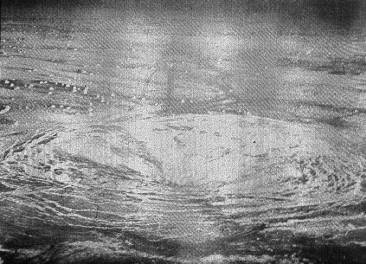
1974
Under project Smiling Buddha, India successfully detonates its second
nuclear weapon near the Pakistani border, the first time in the country
openly becomes the sixth nation to do so.
- 1973 : When the Hippies across the world were loving the Dark Side of the Moon by Pink Floyd on one hand and US Government was reeling under the Watergate scandal on the other hand, India was chugging along between the two extremes. A special program was initiated this year in India in the direction of environmental conservation. The Indian tiger population at the turn of the 20th century anywhere between 20,000 to 40,000 which had came down drastically over the year – the first country-wide tiger census conducted in 1972 estimated the population to comprise a little more than 1,800 individuals. Hence the Project Tiger was envisaged to save the Tigers in 1973. The project was launched in the Palamau Tiger Reserve, and various tiger reserves were created in the country based on a ‘core-buffer’ strategy. For each tiger reserve, management plans were drawn up based on the following principles: Elimination of all forms of human exploitation and biotic disturbance from the core area and rationalization of activities in the buffer zone. Restricting the habitat management only to repair the damages done to the ecosystem by human and other interference so as to facilitate recovery of the ecosystem to its natural state. Monitoring the fauna and flora changes over time and carrying out research about wildlife.
- 1972 : Indira Gandhi and Julfikar Ali Bhutto respective top leader from India and Pakistan signed the Simla Agreement at 12:40am on July 2, 1972. It followed from the war between the two nations in the previous year that had led to the independence of East Pakistan as Bangladesh. The agreement laid down the principles that should govern their future relations. It also conceived steps to be taken for further normalization of mutual relations. Most importantly, it bound the two countries ‘to settle their differences by peaceful means through bilateral negotiations’. The agreement also converted the 1949 UN ‘Cease-fire Line’ into the Line of Control (LOC) between Pakistan and India. Aside from the political even, 1972 is also the year when I was born in a government hospital in New Delhi, spent the first few weeks of my life in the incubator fighting pneumonia which I caught as soon as a was born prematurely. The doctors had told my parents to go home and take care of their other kids, the chances of my survival were low, but proving to be a tough nut despite a fragile physique, I survived.
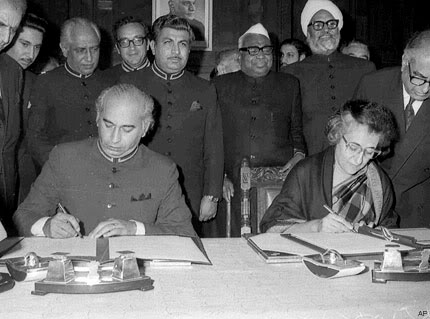
1972
Following Pakistan’s surrender to India in the Indo-Pakistani War of
1971, both nations sign the historic bilateral Simla Agreement, agreeing
to settle their disputes peacefully.
- 1971 : The Indo-Pakistani war was direct military conflict between India and Pakistan during the Bangladesh Liberation War. Indian, Bangladeshi and international sources consider the beginning of the war to have been Operation Chengiz Khan, when Pakistan launched pre-emptive air strikes on 11 Indian airbases on December 3, 1971, leading to India’s entry into the war of independence in East Pakistan on the side of Bangladeshi nationalist forces, and the commencement of hostilities with West Pakistan. Lasting just 13 days, it is considered to be one of the shortest wars in history. During the course of the war, Indian and Pakistani forces clashed on the eastern and western fronts. The war effectively came to an end after the Eastern Command of the Pakistani Armed Forces signed the Instrument of Surrender, on 16 December 1971 in Dhaka, marking the birth of a new nation ‘Bangladesh’. Around 90,000 Pakistan Army men were taken as Prisoners of War by the Indian Army. An estimated number of 2,500,000 civilians were killed in Bangladesh by Pakistani Army and up to four hundred thousand women raped. As a result of the conflict, a further eight to ten million people fled the area and took refuge in India – most still continue to live in India in deplorable conditions, refusing to go back to even worst condition in their native place.
- 1970 : It was the first year when 22nd April was marked as Earth Day. India with booming population and decades of slow economic growth post Independence was a country of shortages. Every manufacturing activity was planned and controlled by the government, only those private business were able to succeed who had the ability to work with the government – the bureaucrats and the politicians. Global automobile market was booming with innovation but in India just needed to have a two wheeler Bajaj Scooter to be considered as a person who’s achieved something. It took Bajaj more than 10 years to produce their first 100,000 scooter, today its sells more than than number in a month!
- 1969 : Despite the provisions, control and regulations of Reserve Bank of India, banks in India except the State Bank of India, continued to be owned and operated by private persons. By the 1960s, the Indian banking industry had become an important tool to facilitate the development of the Indian economy. At the same time, it had emerged as a large employer, and a debate had ensued about the nationalization of the banking industry. Indira Gandhi, the then Prime Minister of India, expressed the intention of the Government of India in the annual conference of the All India Congress Meeting in a paper entitled ‘Stray thoughts on Bank Nationalization’ The meeting received the paper with enthusiasm. Thereafter, her move was swift and sudden. The Government of India issued an ordinance ‘Banking Companies (Acquisition and Transfer of Undertakings) Ordinance, 1969′ and nationalised the 14 largest commercial banks with effect from the midnight of 19 July 1969. These banks contained 85% of bank deposits in the country in those days. Within two weeks of the issue of the ordinance, the Parliament passed the Banking Companies (Acquisition and Transfer of Undertaking) Bill, and it received the presidential approval on 9 August 1969. In 1990′s the another Prime Minister from the same Congress Party awakened to undo the mistake and allow Private Banking in India.
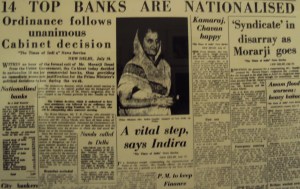
1969 India starts walking the path of Economic Disaster led by Indira Gandhi; starting with nationalization of 14 banks
- 1968 : Flower power was on the rise and the youth across the world was being tempted by the Hippie culture. Hippie trail was the journey taken by hippies and others in the 1960s and 1970s from Europe overland to and from southern Asia, mainly India and Nepal. Beatles were the most influential youth icon in that era and they visited India in February 1968. They traveled to Rishikesh to attend an advanced Transcendental Meditation training session at the ashram of Maharishi Mahesh Yogi. Beatles interest changed Western attitudes about Indian spirituality. Along with their wives, girlfriends, assistants and numerous reporters, the Beatles arrived in India and joined the group of 60 celebrities including musicians Donovan, Mike Love of the Beach Boys, and flautist Paul Horn. While there, John Lennon, Paul McCartney and George Harrison wrote many songs and Ringo Starr wrote his first. Eighteen of those songs were recorded for ‘White’ album, two songs appeared on the ‘Abbey Road’ album, and others were used for various solo projects. Starr and his wife left on 1 March, after a ten-day stay; the McCartneys left after one month due to other commitments; while John Lennon and George Harrison stayed about six weeks.
- 1967 : Dr. Zakir Hussain was the 3rd President of India from 13 May 1967 until his death on 3 May 1969, he was the first President of India to die while in office. An educationist and intellectual, Hussain was the country’s first Muslim president. Zakir Hussain co-founder of Jamia Milia Islamia and served as its Vice Chancellor for more than 2 decades, under Hussain, Jamia became closely associated with the Indian freedom movement.
- 1966 : Those were the days when large percentage of Indian population was struggle for even one meal, the image that most people across the globe would have of Indian would be of dark, skinny, poor people, but here was a person from India who put its name on the world’s glamour map and must have helped in shocking many people across the world on their perception about India. Reita Faria was born in Mumbai. After winning the Miss Mumbai crown earlier that year, she won the Eve’s Weekly Miss India contest. After her one-year tenure as Miss World, she refused modeling and films and instead concentrated on medical studies. Reita Faria was a student at the Grant Medical College & Sir J. J. Group of Hospitals where she completed her M.B.B.S. degree.
- 1965 : Lal Bahadur Shastry is undoubtedly the most beloved Prime Minister of India till date. He gave the famous slogan ‘Jai Jawan – Jai Kisan’ (Hail Soldiers – Hail Farmers). He was the hero of 1965 Indo-Pakistani war which was a culmination of skirmishes that took place between April 1965 and September 1965 between Pakistan and India. The war began following Pakistan’s Operation Gibraltar, which was designed to infiltrate forces into Jammu and Kashmir to precipitate an insurgency against rule by India. The five-week war caused thousands of casualties on both sides. It ended in a United Nations mandated ceasefire and the subsequent issuance of the Tashkent Declaration. Prime Minister Shastri died in Tashkent, the day after signing the Tashkent Declaration, reportedly due to a heart attack, but people allege conspiracy behind the death. Upon his death, Gulzarilal Nanda assumed the role of Acting Prime Minister until the Congress Parliamentary Party elected Indira Gandhi, daughter of Jawarhar Lal Nehru, over Murarji Desai to officially succeed Shastri as leader of Congress Party and Prime Minister of India.
- 1964 : Consider this to understand the dominance of World Hockey by India in 1930′s, 40′s and 50′s – in as many as 30 matches at the Olympics from 1928 to 1956, India netted a whopping 197 goals, conceding a negligible 8 and an impeccable 6 consecutive gold medals at the games. Then in 1960 India lost the final match and Gold to Pakistan. 1964 Tokyo Olympic was the year when India Hockey team took the Gold Medal back by beating Pakistan in the finals. Nobody plays hockey in India anymore, its place has been taken over by Cricket. India is no where in the world hockey today, but as winning six Olympic Gold medals in a row is something which we all should be proud of even today.
- 1963 : Kashmir is India’s Achilles heel – one of the most beautiful place in the world became a bone of contention when British Colonial Rulers goofed up badly, or maybe deliberately left an open wound between India and Pakistan. The situation is always volatile, specifically in the Srinagar Valley and in 1963 a mischief resulted in bloodbath. In Hazratbal mosque in Srinagar there is a hair which is supposed to be of Prophet Muhammed beard sealed in a glass enclosure. This was mysteriously stolen in 1963 which followed large scale violence in the valley. It was recovered as mysteriously as it was lost after some time.
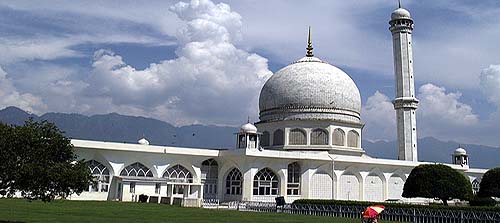
1963
The relic of Prophet Mohammad vanished from Hazratbal shrine in
Srinagar leading to large scale violence, only to be recovered months
later\
- 1962 : While Indian political leadership was supporting China globally and feeling good with slogans like Hindi-Cheeni Bhai Bhai (Indian-Chinese Brotherhood), China has some other ideas to put the Indian leadership, specially PM Jawahar Lal Nehru in place. The 1962 Sino-Indian War highlighted the disputed Himalayan border – it was the main pretext for war for China, but other issues played a role. There had been a series of violent border incidents after the 1959 Tibetan uprising, when India had granted asylum to the Dalai Lama. India initiated a Forward Policy in which it placed outposts along the border, including several north of the McMahon Line, the eastern portion of a Line of Actual Control proclaimed by Chinese Premier Zhou Enlai in 1959. Unable to reach political accommodation on disputed territory along the 3,225-kilometer-long Himalayan border, the Chinese launched simultaneous offensives in Ladakh and across the McMahon Line on 20 October 1962, coinciding with the Cuban Missile Crisis. Chinese troops advanced over Indian forces in both theatres, capturing Rezang la in Chushul in the western theatre, as well as Tawang in the eastern theatre. The war ended when the Chinese declared a ceasefire on 20 November 1962, and simultaneously announced its withdrawal from the disputed area.
- 1961 : Goa liberation movement was aimed to end the 451 years of Portuguese colonial rule in Goa, India. The movement gained mass momentum specially after the end of British Rule in India in 1947. It continued to build on the smaller scale revolts and uprisings for more than a century. The struggle was conducted both within Goa and beyond, and was characterised by a range of tactics including nonviolent demonstrations, revolutionary methods and diplomatic efforts. Finally the Portuguese rule in its Indian colonies ended when Indian Armed forced liberated Goa in 1961 and incorporated the territories into the Indian Union, the annexation was recognized by Portugal only in 1975.
- 1960 : The States Reorganisation Act, 1956 of India defined boundaries for the states within India on the basis of languages. The Bombay State that was formed as a consequence of this act, however, was composed of different areas where different languages were spoken; Marathi, Gujarati, Kutchi and Konkani. There was a movement by local people to divide the Bombay State into two states; one composed of areas where people primarily spoke Gujarati and Kutchhi and the other where people primarily spoke Marathi and Konkani. The state of Maharashtra and Gujarat were formed as a result of this movement according to the Bombay Reorganisation Act, 1960 enacted by the Parliament of India on 25 April 1960. The act came into effect on 1 May 1960.
- 1959 : Tibet bears the brunt of Chinese aggression, Tibetan population leave the country to save their life. Dalai Lama, spiritual leader of Tibet, secretly crosses over to India, to make Dharamashala in Himachal Pradesh, India his home and the base for Tibetan government in exile.
- 1958 : Known as TheFlying Sikh, Indian athlete Milka Singh won two gold medals in the Asian Games, one of the fastest runner in the world at the time, millions of heart were broken when he missed the Medal by a whisker, in the subsequent Olympic Games.
- 1957 : Bollywood, the Indian counterpart of American film industry Hollywood, creates pure magic in Mother India – one of the greatest movie made in India till date.
- 1956 : The brain behind the wonderful document that Indian constitution is, Ambedkar gets fed up with the Nehru’s leadership and the lack of effective government. He decides to take a short cut to uplift the large poor population of India and break the caste system by adopting Buddhism.
- 1955 : One of the great positive quality of early Indian leadership was focus on Institution building, State Bank of India was created on the foundation of Imperial Bank of India – today it is the bank with largest number of branches in India’s and probably in the world.
- 1954 : Aiming for the global leadership role Indian Prime Minister Jawahar Lal Nehru starts walking into the trap of scrupulous communist Chinese leadership. Tibet and India paid and continue to pay a huge price of those initially miscalculations.
- 1953 : The socialist bug bites some of the top leaders, inspired by the Soviets the Nehru Government nationalizes the Air Travel company ‘Air India’ wrestling the private control of JRD Tata.
- 1952 : The Indian population truly got the taste of democracy when general elections for constituting first Lok Sabha since independence were held between 25 October 1951 and 21 February 1952. The Indian National Congress (INC) got only 45% of the votes, but due to multiparty system, it stormed into power with 364 of the total 489 seat. 45% of Indian population exercised their right to vote. Pandit Jawaharlal Nehru became the first elected Prime Minister of the country, his party winning 47,665,875 of the votes cast.
- 1951 : The young baby country takes huge steps in a number of fields, catching up with the rest of the world. Salarjung Museum continue to hold the amazing treasures which are a window to what India once was ‘a Bird of Gold’
- 1950 : Another feather on the cap, after winning its freedom peacefully, India manages to create and adopts a written constitution proclaiming it to be a Republic where all the people have equal rights. Many advance countries at that point of time didn’t had such a well written constitution nor they had given full and equal rights to all the citizens.
- 1949 : The Britishers had to leave India but cunningly they left a monster at its border names Pakistan, a country created on the foundation of violence, in the name of a peaceful religion, with the objective of creating tension in the region forever, today the monster has grown into a global menace.
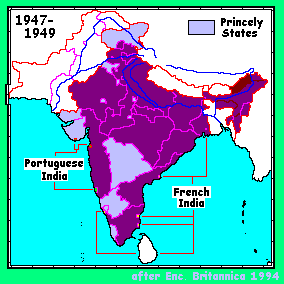
1949
Ceasefire ordered by the United Nations Security Council at the reqeust
of India – Birth of India-Pakistan conflict in Kashmir
- 1948 : India won the freedom peaceful, but lost the leader of the freedom struggle, the father of nation and an icon for peaceful, non-violent movement, Mahatma Gandhi passed away in a violent death by a bullet.
- 1947 : Freedom at midnight, finally a breath of fresh air for the people of India who struggled for centuries under the tyranny of foreign invaders
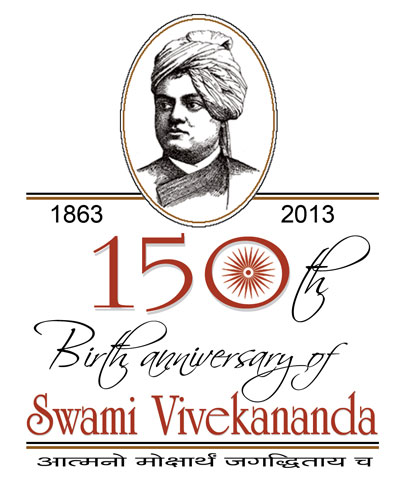
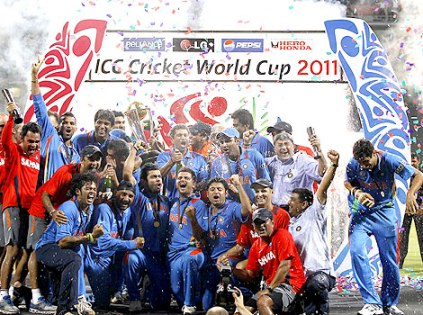
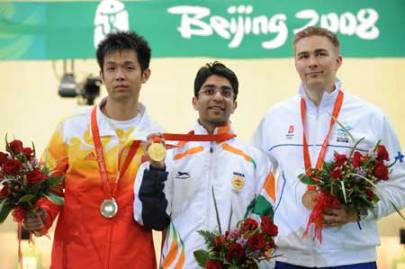
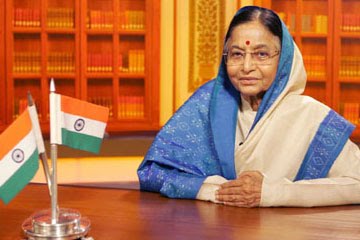
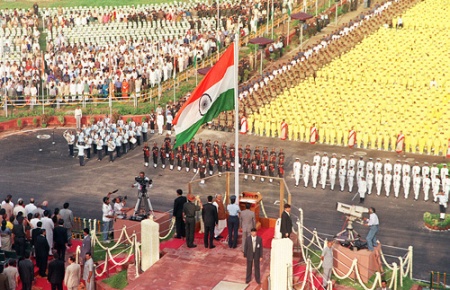
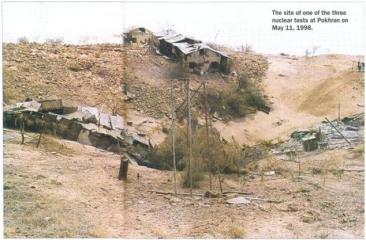
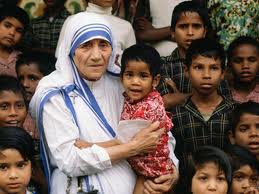
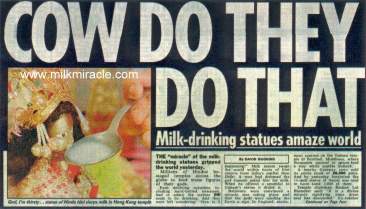
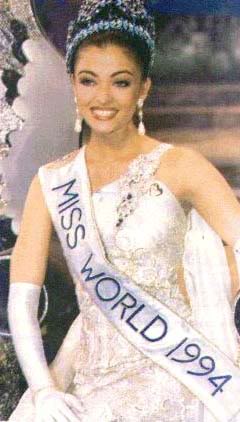
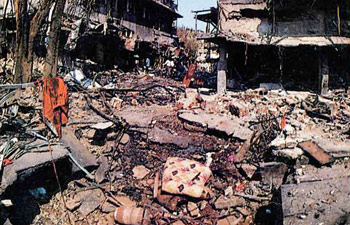
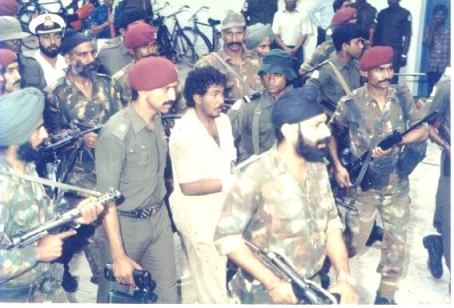
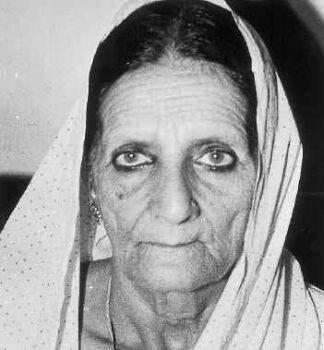
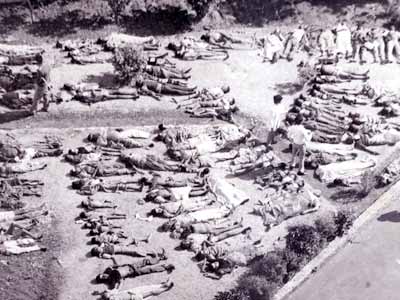
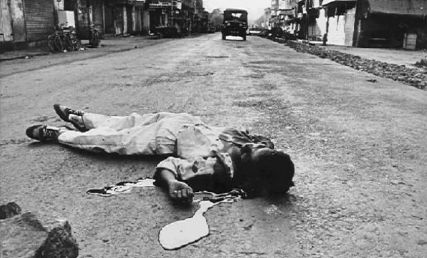
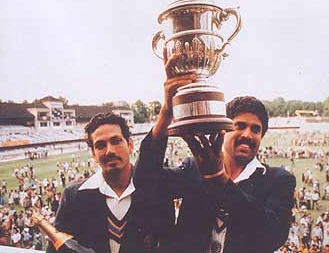

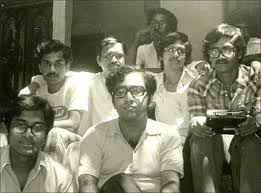
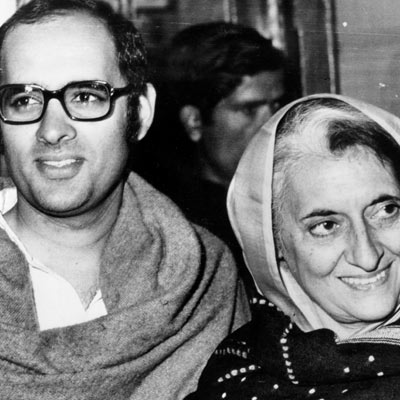

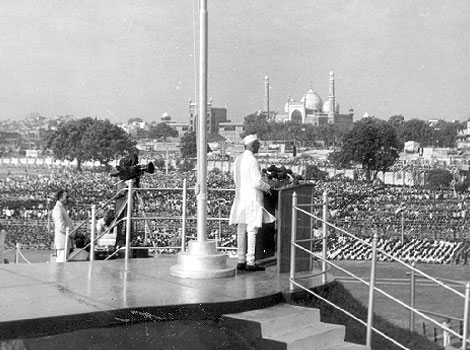

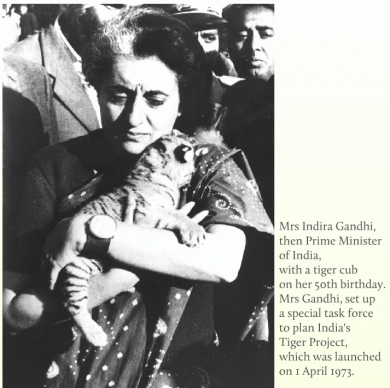
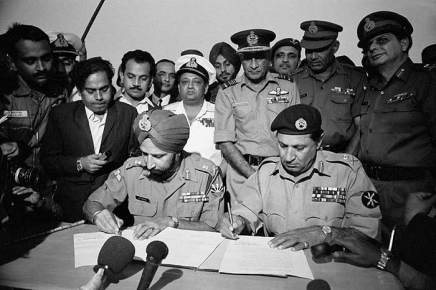
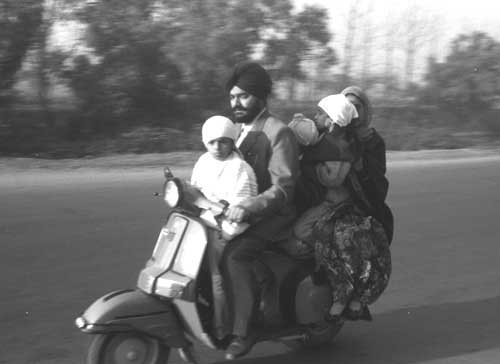

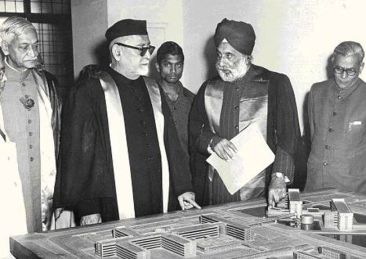
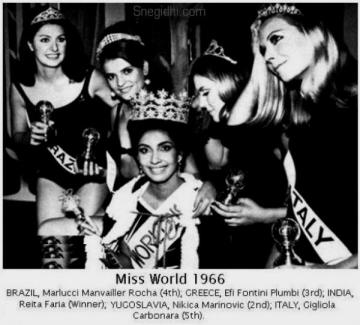
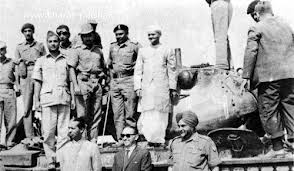
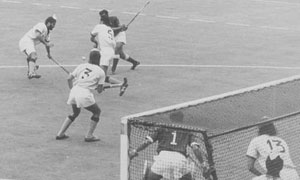
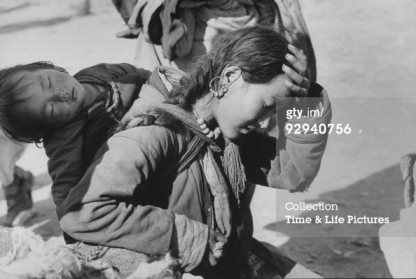
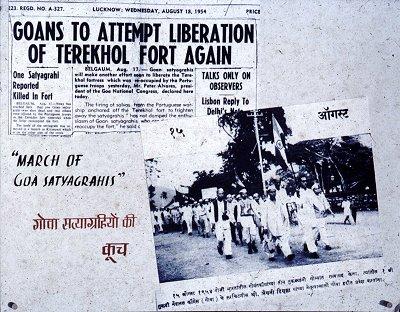
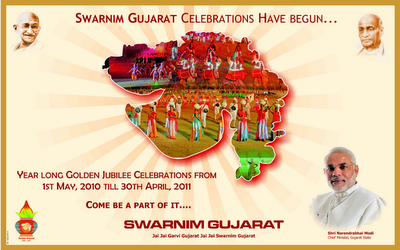
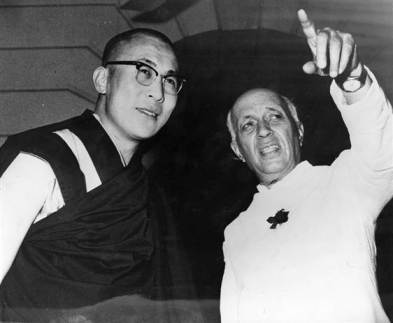
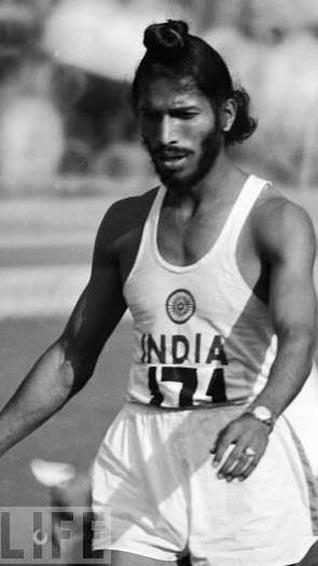
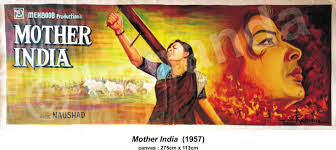
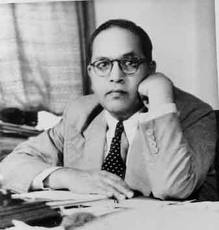
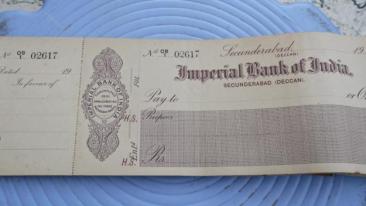
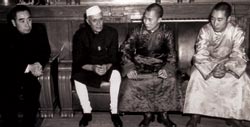
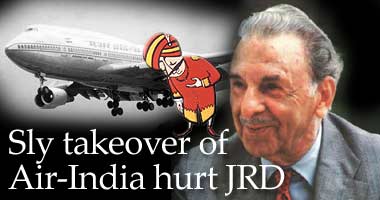
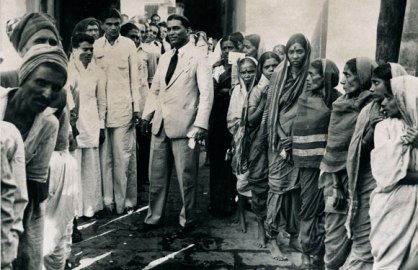

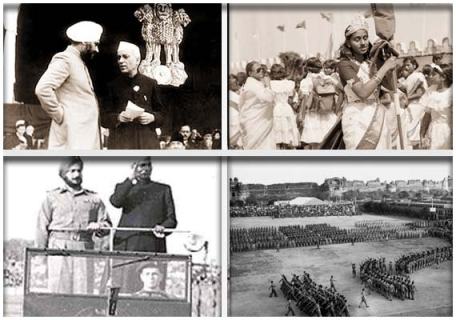
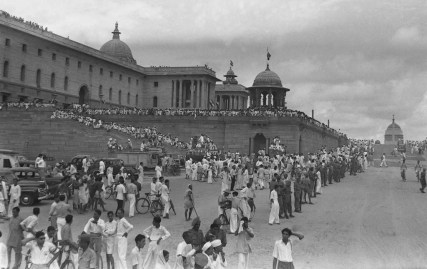
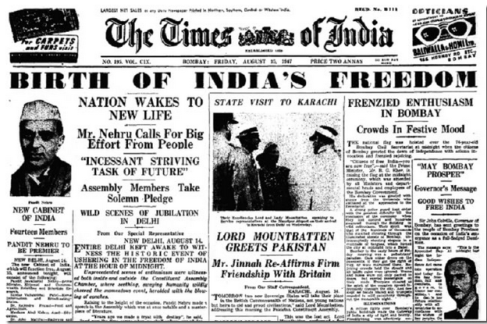
OK
ReplyDeleteHowdy, would you mind letting me know which web host you’re utilizing? I’ve loaded your blog in 3 completely different web browsers
ReplyDeletefire and safety course in chennai
I have read your blog and I gathered some needful information from your blog. Keep update your blog. Waiting for your next update. nebosh course in chennai
ReplyDelete